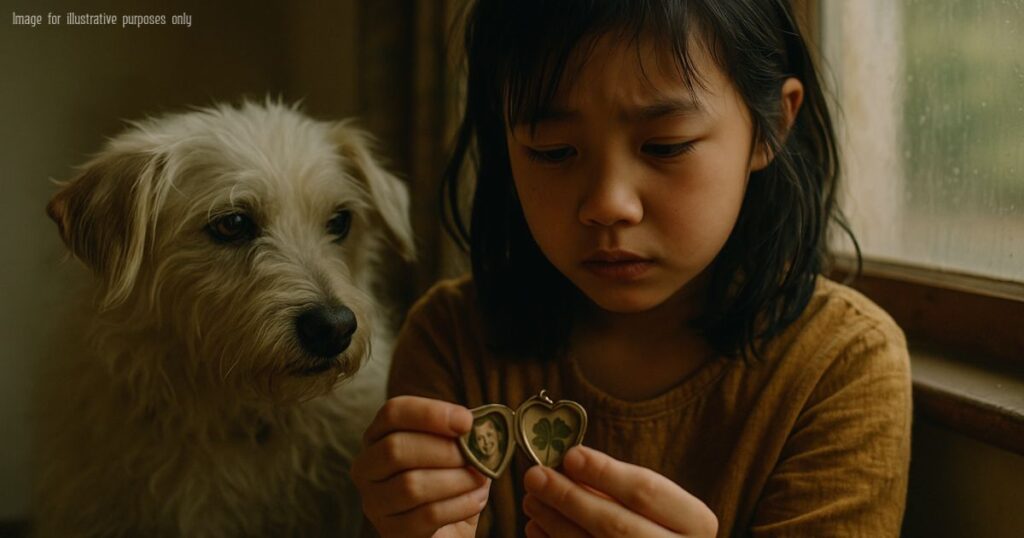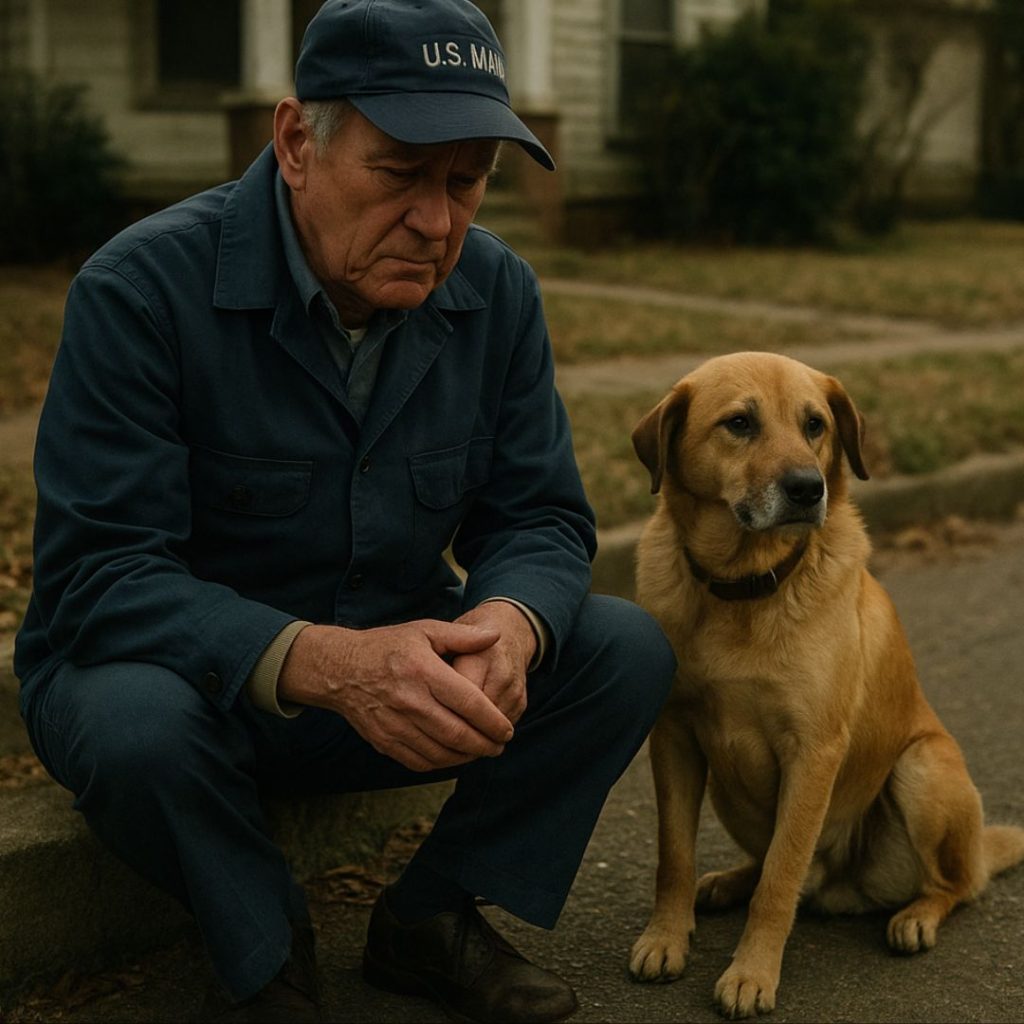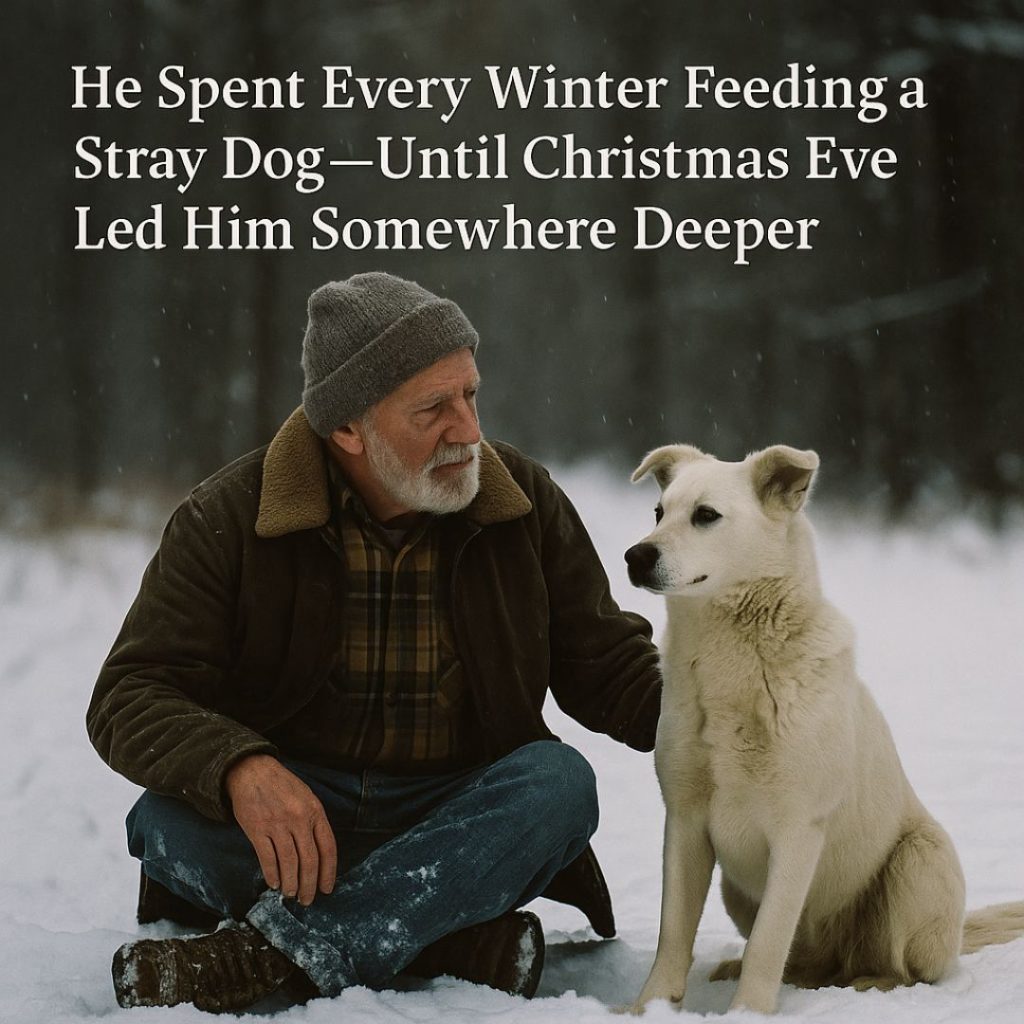Part 6 – What Dogs Can’t Say
Cloud couldn’t talk.
He couldn’t sit Ruth down and explain who had taken what, or when it had happened, or why he refused to let Lena Vaughn touch him.
But he could show them.
And that’s exactly what Ruth planned to let him do.
“Memories leave marks,” she told Harper as they gathered every document Mei had left behind. “Sometimes in paper. Sometimes in people. And sometimes… in animals who never forget.”
Harper nodded, stroking Cloud’s scruff. “He remembers the whole thing. I can feel it.”
Ruth pressed a trembling hand to the old manila folder, eyes narrowed.
“We just have to prove it.”
Joy Tomlinson made the call.
It took a day to get someone from the county’s therapy animal program to agree to meet. His name was Everett Molloy—retired veteran, part-time trainer, and former compliance officer.
“Most dogs, you can’t trust with memory,” Everett said when he arrived. “They live in the moment. But once in a while… you find one with a bone-deep understanding. That’s what therapy dogs were born for.”
He was tall and wiry, with sun-lined skin and a cane he barely used. When he entered the living room, Cloud didn’t bark. He stood, walked over, and sat directly in front of Everett like an old soldier reporting for duty.
Everett raised his eyebrows. “Well now.”
He opened a canvas bag and pulled out a soft lead and a photo binder.
“I want to show him some images,” he said. “You’ll watch his posture. His ears, his tail. Most dogs respond to familiar people, places, or emotions—even from pictures.”
Harper sat cross-legged beside Cloud, her hand resting lightly on his back.
One by one, Everett flipped through the binder. Images of the schoolyard. The reading circle. Mei in the garden.
Cloud stayed calm.
Then Everett turned to the staged photo—the one with Lena and the chart in the background.
Cloud’s muscles stiffened.
His ears went flat.
And then, he got up, walked over to the fireplace, and growled.
Low and deep. Not at the photo.
At the fireplace itself.
Ruth stared. “There’s nothing there, sweetheart.”
But Cloud didn’t budge. He stared into the stone hearth like it had whispered something cruel.
Harper knelt beside him.
Then she saw it.
A faint crease in the paneling just behind the log rack.
A hidden compartment.
Ruth fetched a flathead screwdriver.
And behind the panel, taped to the inside wall, was a flash drive.
A small white sticky note was attached to it in Mei Lin’s neat, decisive handwriting:
For when they come back. —M
Ruth’s hands trembled as Everett plugged the flash drive into his laptop.
It whirred once. Loaded. A folder popped open:
THERAPY PROGRAM – VIDEO LOGS
Inside were dozens of short clips.
Mei, training Cloud.
Children reading.
And one, dated just two days before her final hospital admission, labeled simply: PRIVATE – Cloud, Lena, VH.
They played it.
The video began with Mei in Room 16, sitting with Cloud beside her. Across from her stood Dr. Victor Hanes and Lena Vaughn.
“I’ve told you already,” Mei’s voice said firmly. “He’s not a fit.”
Victor’s voice followed, low and clipped. “That’s not your decision anymore, Mei.”
“I never signed the file.”
“No, but the reassignment is in motion. Lena’s grieving, and the board approved the trial period.”
Cloud shifted uncomfortably in the video. Lena reached for the leash.
Cloud snapped—not viciously, but with force—lunging back and away from her hand.
Lena recoiled.
“See?” Mei said. “He doesn’t trust her.”
Victor stepped forward. “He’ll learn.”
“He remembers,” Mei snapped. “And he knows the difference between comfort and control.”
Cloud sat beside Mei, watching her like she was the only thing that made sense.
The video ended.
No violence.
No explosions.
Just truth.
Hard, quiet truth.
“That’s all we need,” Everett said, closing the laptop. “You’ve got timestamped proof. Improper reassignment, mishandling of therapy protocol, and an animal showing documented distress.”
“What do we do with it?” Harper asked.
“We take it to the board. Cloud stays where he belongs.”
Ruth stood. “And what if they come back?”
Everett looked down at the dog.
“I don’t think Cloud’s going anywhere.”
The next day, Ruth sent the video and files to the district’s legal office.
Within hours, a formal statement was issued to Lena’s family: the reassignment was invalid, the therapy dog legally belonged to no one, and custody would default to the last documented handler—Mei Lin.
Harper stared at the letter in disbelief.
“But Mom’s not here.”
Ruth pulled her close. “You are. And you’re her legacy.”
Cloud licked her hand gently, as if to say he already knew.
That night, Harper placed the flash drive in the same box where the locket had once rested. Then she added the photograph of Cloud and Mei, and a small drawing she’d made—Cloud curled at her feet, a clover in his fur.
“I think we can rest now,” she whispered.
But Cloud lifted his head one last time and looked toward the window.
Outside, a figure watched from across the street.
Lena Vaughn.
She didn’t approach.
She just stood beneath the flickering streetlight, face pale, arms wrapped around herself.
Then she turned and walked away.
For the last time.
Two days later, Harper brought Cloud to school.
Not for class. For something else.
Mr. Avery met them at the gate.
“We’re restarting the program,” he said, voice thick with emotion. “In her name. If you and Cloud are willing.”
Harper looked down at the dog.
He wagged his tail once.
Then twice.
And walked toward Room 16 like he was finally going home.


